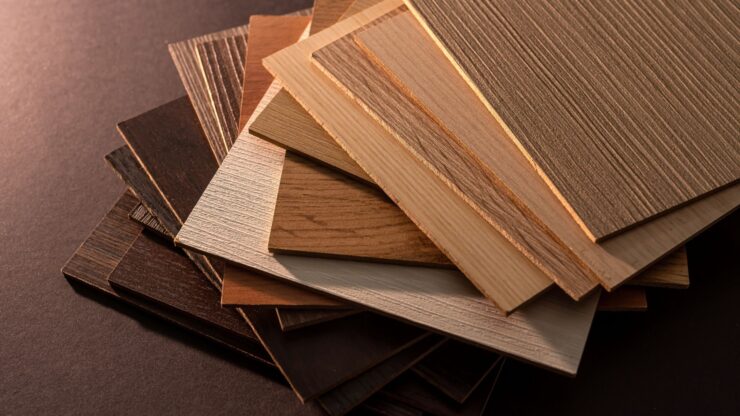Table of Contents
With the appearance of wood grain for your furniture, veneered MDF is a more affordable choice than solid wood. Here’s all you need to know about it.
Advantages of Using Veneered MDF
Combining the affordability of medium density fibreboard and the stunning appearance of solid wood, veneered MDF is a great choice of material for a wide range of different professional and DIY projects. But what exactly is veneered MDF? How is it made? And how does it stand up next to other materials such as regular MDF, plywood, and solid wood? Read on more on cworkshop to learn everything you need to know about the benefits of using veneered MDF for your next project.
What is veneered MDF?
Veneered MDF consists of a core board made of medium density fibreboard and a thin layer of solid wood veneer as the face. These thin sheets of real wood have an attractive grain, making the whole board look like high grade solid wood. Popular wood types used for veneers include oak, cherry, ash, walnut, maple, and wenge.
How is the MDF core made?
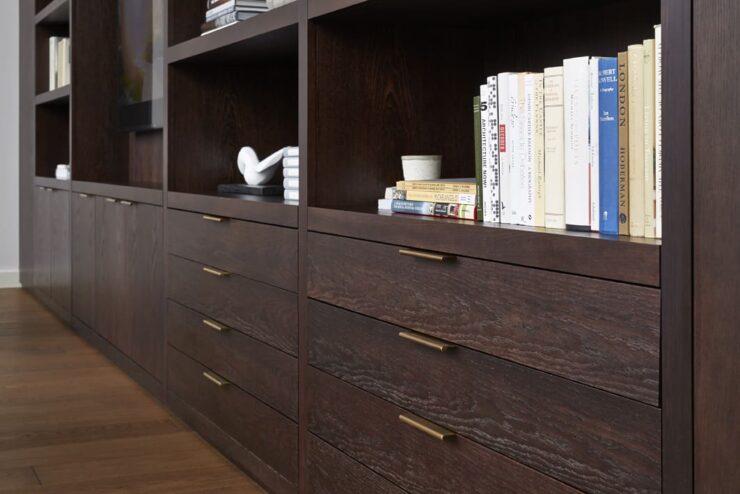
MDF is an engineered sheet material usually made from leftover wood fibres from softwood trees. These wood fibres are bonded together using an adhesive made of resin, usually urea-formaldehyde, and then applying pressure.
Originally a popular material for flat-pack furniture, MDF is now a common material for a wide range of uses. Although it does not have the wood-like appearance of plywood or solid wood, MDF can be painted or combined with attractive veneers to achieve your preferred style.
Different kinds of MDF include moisture resistant MDF, fire retardant MDF, and various colours.
How is veneered MDF made?
Wood veneers are made by slicing thin layers off timber logs. These layers are joined together to create large sheets of super thin wood.
The angle at which the wood is cut and the way the veneer slices are joined together impacts the grain and appearance of the veneer sheet. Book matching is perhaps the most popular technique, with the slices of veneer joined together in mirror-image pairs, providing a cohesive and attractive appearance. Slip match and reverse slip match are two other techniques that you may come across when shopping for veneered MDF.
MDF has a smooth surface so it’s easy to bond the MDF panel with a sheet of wood veneer. This bonding prevents splits or cracks in the veneers.
So, what are the advantages of using veneered MDF in your next project?
1. It looks amazing
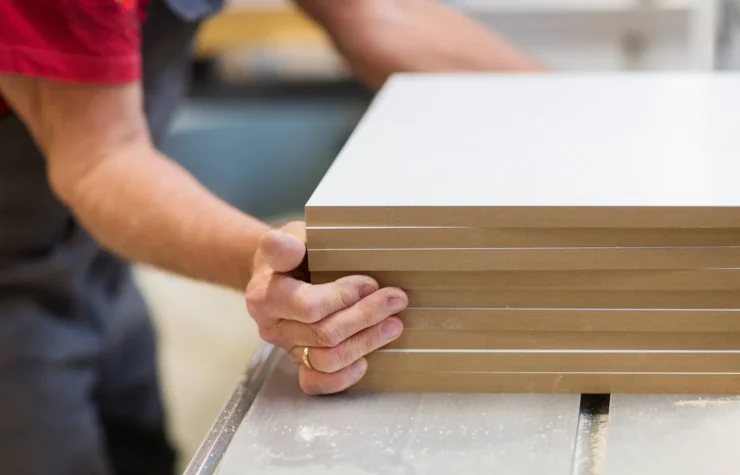
One of the most obvious advantages of veneered MDF is that it has the attractive appearance of solid wood. With a wide range of different wood veneers available for your MDF, it’s easy to choose the perfect look for your project.
For example, oak veneered MDF is a popular option due to its medium texture and gorgeous light colour. It goes well with many different aesthetics and styles, making oak a versatile choice for your veneered MDF.
Other popular woods for your veneered MDF include cherry, which has a uniform wood grain and a warm, reddish brown colour. For a paler wood veneer, opt for ash which has more of a yellow tint and an attractive grain, or silky-looking maple veneer. On the other hand, for a deeper and richer colour, choose wenge or walnut veneered MDF panels.
For the highest quality veneers, choose Superior grade. This grade is perfect if you want your furniture to look amazing or need consistency across multiple sheets. Commercial Grade A veneered MDF only has small variations in appearance and colour, while Commercial Grade B has more variation or imperfections.
2. It’s affordable
More cost-effective and easily available than solid wood, veneered MDF sheets are ideal for furniture and construction projects on a budget. While it’s often more pricey than your typical panel of MDF, if you want to build furniture with that classic wood look, MDF with veneers is definitely worth the price.
Using veneered MDF gives you all the ease of use and manufacturing efficiency of MDF, plus a stylish look for your product. It is often a cheaper option than real wood due to the process of laminating a decorative finish onto an MDF core. The cost savings can be further increased when using multiple layers that have been engineered together, resulting in stronger but lighter components.
In addition to being cost-effective, using veneered MDF for your product has several other advantages. Its uniform density allows for consistent production results and its cut quality is excellent – far better than other materials such as solid wood or hardwood plywood. It’s also easy to clean and won’t warp or expand with exposure to moisture or heat, making it perfect for humid environments.
Overall, veneered MDF is an ideal material if you need a strong yet attractive surface at a lower cost than real wood options. It can offer improved surface appearances with reduced manufacturing times and minimal wastage compared to solid wood alternatives – all while saving money!
3. It’s sustainable
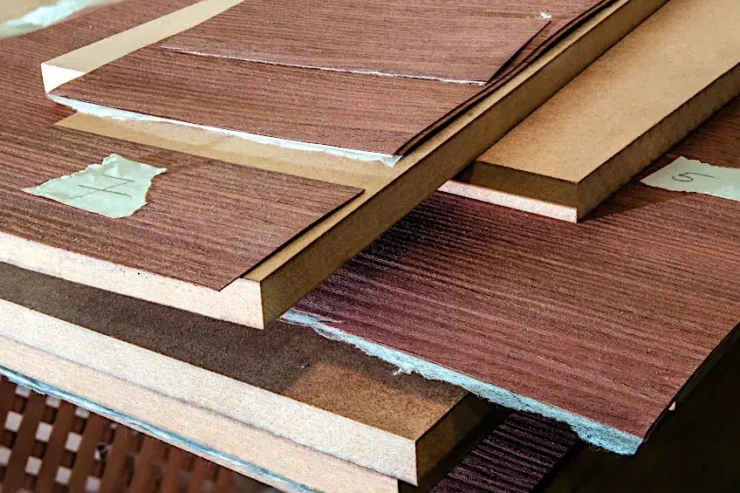
Because MDF is made from the lower quality and waste parts of harvested wood, it’s the more sustainable option than a solid board of timber. Moreover, its long-lasting and durable nature means that it is a more sustainable option for your woodworking project.
4. It doesn’t warp or expand
Unlike solid wood, MDF stands up well against changes in heat and humidity. It’s unlikely to warp, expand, or contract, which makes it a great and stable choice for many projects. If you’re looking for a reliable material that will stand the test of time without cracking or warping, veneered MDF is a great choice.
5. It can be polished
Just like solid wood, veneered MDF can be polished for a classic and attractive look. This accentuates the grain and colours of your chosen wood style, helping your furniture stand out.
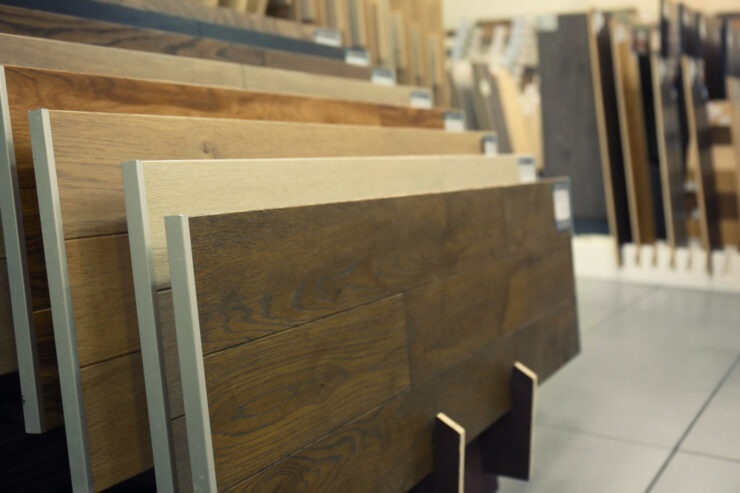
So, is veneered MDF right for you?
Versatile, attractive, and affordable, veneered MDF is suitable for all sorts of projects. Choose from your favourite woods for the veneer (oak, ash, and cherry are just a few popular wood veneer types) and enjoy the stunning appearance at a fraction of the price of solid natural wood.
Looking for veneered MDF for your next project?

